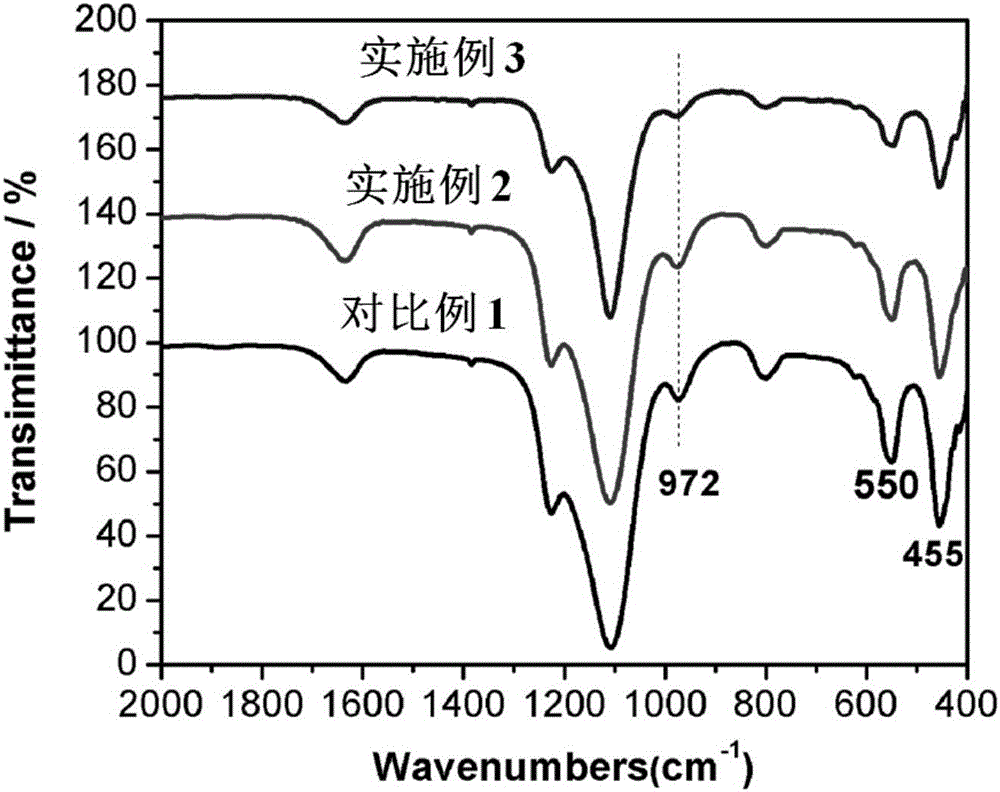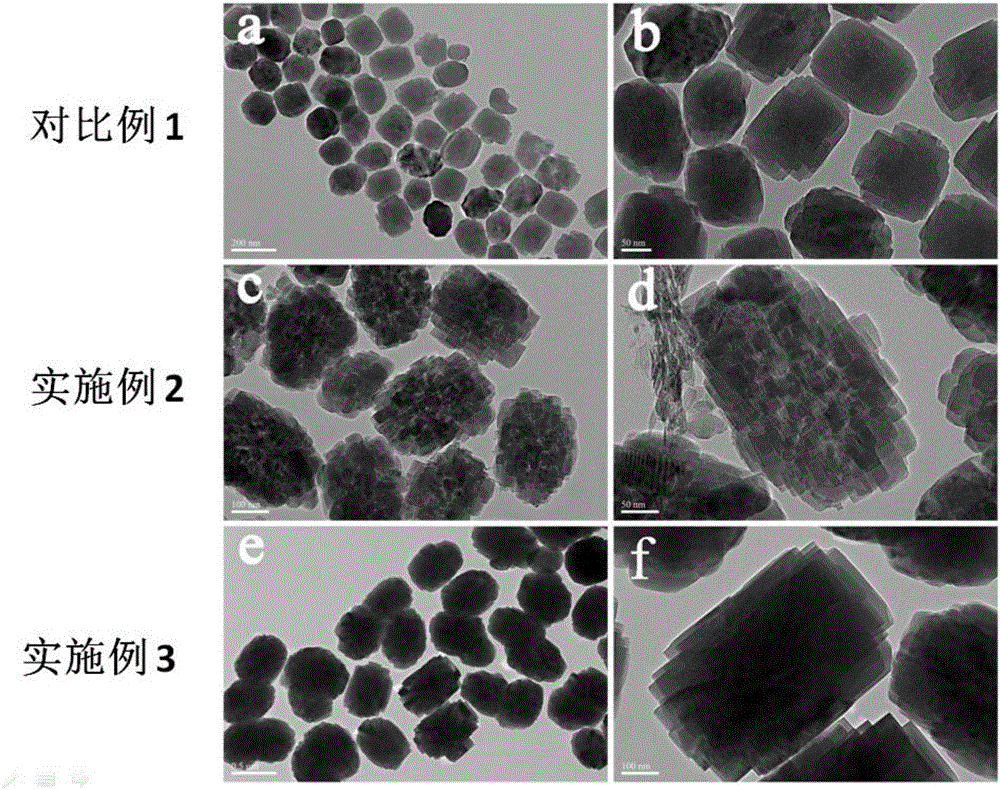Preparation method of hierarchical porous titanium silicalite molecular sieves
A titanium-silicon molecular sieve and channel technology, applied in molecular sieve compounds, molecular sieve catalysts, molecular sieve characteristic silicates, etc., can solve the problems of PVA being unable to play a template role, phase separation, weakening of the precursor solution, etc., and achieve excellent catalytic effect.
- Summary
- Abstract
- Description
- Claims
- Application Information
AI Technical Summary
Problems solved by technology
Method used
Image
Examples
Embodiment 1
[0030] Under the condition of continuous stirring, 23.4g tetrapropylammonium hydroxide (20wt%) was slowly added in 15.0g tetraethyl orthosilicate, after tetraethyl orthosilicate was completely hydrolyzed, a colorless and transparent solution A was obtained; then , the mixed solution B of 0.72g titanium source and 2.4g isopropanol is slowly added in solution A to obtain colorless and transparent solution C; ) after being fully mixed, the solution was transferred to a hydrothermal reaction kettle, first crystallized at 90° C. for 24 hours, and then heated to 160° C. for 24 hours. After the obtained product was centrifuged and washed, it was dried at 110°C overnight, and finally the obtained solid was calcined at 550°C for 6 hours to finally obtain the multi-level channel TS-1.
Embodiment 2
[0032] Under the condition of continuous stirring, 23.4g tetrapropylammonium hydroxide (20wt%) was slowly added in 15.0g tetraethyl orthosilicate, after tetraethyl orthosilicate was completely hydrolyzed, a colorless and transparent solution A was obtained; then , the mixed solution B of 0.72g titanium source and 2.4g isopropanol was slowly added to solution A to obtain a colorless and transparent solution C; after solution C was removed from alcohol at 80°C for 2h, it was mixed with PVA solution of the same quality (10.0wt%) ) after being fully mixed, the solution was transferred to a hydrothermal reaction kettle, first crystallized at 90° C. for 24 hours, and then heated to 160° C. for 24 hours. After the obtained product was centrifuged and washed, it was dried at 110°C overnight, and finally the obtained solid was calcined at 550°C for 6 hours to finally obtain the multi-level channel TS-1.
Embodiment 3
[0034] Under the condition of continuous stirring, 23.4g tetrapropylammonium hydroxide (20wt%) was slowly added in 15.0g tetraethyl orthosilicate, after tetraethyl orthosilicate was completely hydrolyzed, a colorless and transparent solution A was obtained; then , the mixed solution B of 0.72g titanium source and 2.4g isopropanol was slowly added to solution A to obtain a colorless and transparent solution C; after solution C was removed from alcohol at 80°C for 2h, it was mixed with PVA solution of the same quality (15.0wt%) ) after being fully mixed, the solution was transferred to a hydrothermal reaction kettle, first crystallized at 90° C. for 24 hours, and then heated to 160° C. for 24 hours. After the obtained product was centrifuged and washed, it was dried at 110°C overnight, and finally the obtained solid was calcined at 550°C for 6 hours to finally obtain the multi-level channel TS-1.
[0035] figure 1 It is the XRD spectrum of the titanium-silicon molecular sieve T...
PUM
 Login to View More
Login to View More Abstract
Description
Claims
Application Information
 Login to View More
Login to View More - R&D
- Intellectual Property
- Life Sciences
- Materials
- Tech Scout
- Unparalleled Data Quality
- Higher Quality Content
- 60% Fewer Hallucinations
Browse by: Latest US Patents, China's latest patents, Technical Efficacy Thesaurus, Application Domain, Technology Topic, Popular Technical Reports.
© 2025 PatSnap. All rights reserved.Legal|Privacy policy|Modern Slavery Act Transparency Statement|Sitemap|About US| Contact US: help@patsnap.com



